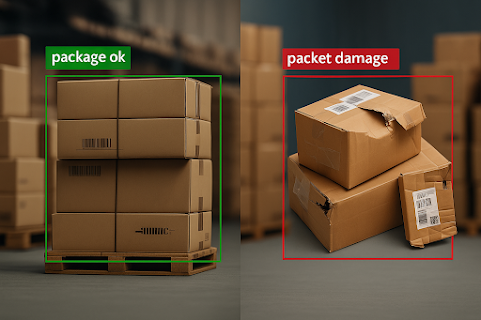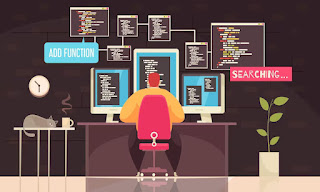Revolutionizing FMCG Packaging: Seal Inspection with Computer Vision AI
Each year, thousands of Fast-Moving Consumer Goods (FMCG) items are recalled due to packaging seal failures. The integrity of packaging seals is vital in sectors like food, pharmaceuticals, and general packaging. A product’s shelf life is directly linked to the strength and quality of its seal. When seals fail, it affects not only product safety but also consumer trust and brand reputation.
To ensure product integrity, packaging must undergo thorough quality checks before distribution. Even the smallest defect in sealing can lead to contamination, tampering, and spoilage. If contamination affects an entire batch, it may trigger an urgent consumer recall and cause severe financial and reputational losses.
Traditionally, manual inspections have been used for packaging quality control. However, these inspections are prone to human error, limit scalability, and increase operational costs. This has led to a shift toward inspection automation. As the demand for consumer goods surges, FMCG manufacturers are turning to Computer Vision AI to automate and enhance seal inspection processes.
In this blog post, we explore how Computer Vision AI is revolutionizing packaging inspection, helping manufacturers detect defects early and avoid costly product recalls.
Why Is Seal and Closure Inspection Critical?
Seals serve as a barrier that protects products from contamination, damage, and tampering. In industries like food, beverage, and pharmaceuticals, defective seals can pose serious risks to consumer health and safety. Despite stringent quality standards, human-based inspections are susceptible to inconsistencies and often fail to detect subtle defects. With the integration of Computer vision AI for FMCG packaging, the demand for AI-powered seal inspection systems is rising. Recent studies forecast that seal inspection using Vision AI will reach a market size of US $259 million by 2025. This clearly signals that automated quality control is making a significant impact in FMCG packaging.
How Seal Inspection with Vision AI Improves Accuracy
Vision AI employs advanced machine learning and deep learning algorithms to detect even the most minor defects in real-time. Here's how this technology is transforming the seal inspection process:
1. Machine Learning for Continuous Improvement
AI models used for seal inspection evolve over time by learning from previously identified defects. This continuous learning approach allows the system to become more accurate with each inspection. The enhanced speed and precision make it ideal for FMCG manufacturers, who require consistent quality and high throughput. Machine learning helps in optimizing inspections and reduces chances of undetected flaws.
2. Integration of Deep Learning
Deep learning models, especially Convolutional Neural Networks (CNNs), enable the system to identify complex patterns in seal images. These models are trained on vast datasets of both defective and non-defective seals. As a result, they can accurately recognize minor inconsistencies and classify them in real-time. Deep learning significantly minimizes false positives and enhances the overall reliability of packaging inspections.
3. Advanced Techniques for High-Resolution Seal Inspection
With the use of high-resolution imaging and AI-powered detection algorithms, Vision AI can detect subtle variations in packaging, such as uneven sealing or misaligned closures. This level of precision is difficult to achieve through manual inspection and helps manufacturers uphold stringent quality standards.
4. Data-Driven Insights
Seal inspection with AI is not just about detecting flaws; it’s about gathering and analyzing data across the production line. AI systems collect detailed insights into recurring defects and categorize them by type—such as missing seals, air leaks, or uneven closures. These insights help manufacturers make informed, data-driven decisions to enhance quality control and optimize the production process.
In industries like pizza packaging, AI-driven seal inspections have already proven to be more accurate and efficient compared to manual checks. This example highlights the real-world effectiveness of computer vision AI in packaging.
Key Benefits of Computer Vision in Seal Inspection
Embracing Computer Vision AI in packaging brings numerous advantages to FMCG manufacturers. Some of the core benefits include:
Better Product Quality
With the automation of inspections, AI can detect seal defects with unmatched precision. This ensures that only products with perfect seals make it to store shelves, reducing the chances of customer complaints and preserving product quality.
Cost Savings
By identifying seal issues early in the production process, manufacturers can avoid expensive product recalls and safeguard their brand reputation. Automated inspection helps minimize waste and eliminates the need for extensive post-production checks.
Improved Efficiency
Manual inspection is labor-intensive and time-consuming. By replacing it with computer vision, manufacturers can speed up the inspection process and reduce labor costs, ultimately improving operational efficiency.
Enhanced Decision-Making
AI systems provide real-time data that support better decision-making. From identifying the root causes of recurring defects to optimizing sealing techniques, data-driven improvements lead to increased productivity and reduced waste.
How Computer Vision Assists in Seal and Closure Inspection
The role of Computer Vision AI in packaging inspection is multi-faceted. Here’s a breakdown of how it supports seal and closure inspection:
Radical Leak Testing System
Computer vision systems are capable of detecting minute leaks or seal defects using advanced image processing and algorithmic analysis. These systems are more effective than the human eye in spotting hard-to-detect issues.
Machine Vision for Defect Analysis
Vision AI integrates with machine vision systems to analyze high-resolution images of package seals. These systems are trained to identify numerous types of defects and can ensure consistent inspection quality across all product batches.
Real-Time Inspection
Real-time analysis allows the AI system to instantly flag defective products, enabling corrective actions before the product proceeds further down the production line. This minimizes downtime and reduces the risk of distributing faulty goods.
Automated Monitoring
With automated inspection, businesses reduce dependency on human labor while improving inspection accuracy. This type of 24/7 monitoring ensures defects are caught immediately, thereby improving operational scalability.
Reduced Production Line Footprint
Compact AI inspection systems take up less space than traditional inspection setups. This allows for better factory floor optimization and makes it easier for manufacturers to scale up production without needing significant reconfiguration.
Protection of Brand Integrity
Consistent product quality fosters consumer trust and protects brand image. By implementing Vision AI inspection, companies can meet industry standards with confidence and maintain their brand's reliability in the market.
Final Thoughts
As the FMCG sector continues to evolve, adopting computer vision AI for packaging inspections is no longer optional—it’s essential. With features like real-time monitoring, automated defect detection, and intelligent data analysis, AI video analytics software can revolutionize packaging quality assurance.
By leveraging computer vision for quality control, manufacturers can ensure product integrity, minimize recalls, and maintain customer trust. At Nextbrain, a leading AI video analytics software development company, we specialize in helping manufacturers integrate powerful AI systems into their packaging processes.
Ready to enhance your seal inspection capabilities? Connect with our team of professionals to explore how Vision AI can improve your packaging inspection process and optimize overall production quality.



%20(1).jpg)
Comments
Post a Comment